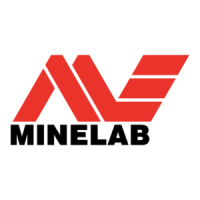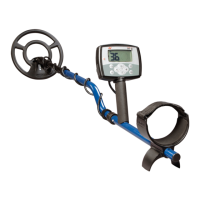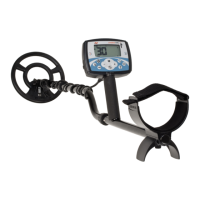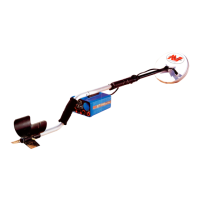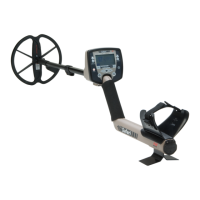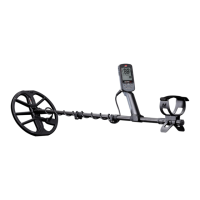Rejected segments appear as black, accepted
segments disappear altogether (allowing signals
from metal objects).
The combinations of accepted and rejected
segments are referred to as patterns.
Desired and undesired targets may appear
anywhere along the discrimination scale, e.g:
Desired ferrous target – Canadian coin
Undesired ferrous target – iron nail
Desired nonferrous target – gold coin
Undesired nonferrous target – pull tab
Discrimination segments can be accepted or
rejected, in turn accepting or rejecting certain
targets.
In addition to the target ID, targets are also
represented as a particular segment on a linear
scale at the bottom of the display.
Each discrimination segment represents a level
of conductivity and ferrous content.
Nonferrous targets are those that have no
iron content, such as gold, silver, copper and
bronze. Nonferrous targets are often higher in
conductivity and are represented by the right
hand side segments.
Ferrous targets are those that contain iron, for
example nails and scrap metal. They generally
have a low conductivity and are represented
by the left hand side segments.
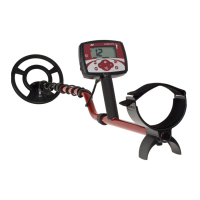
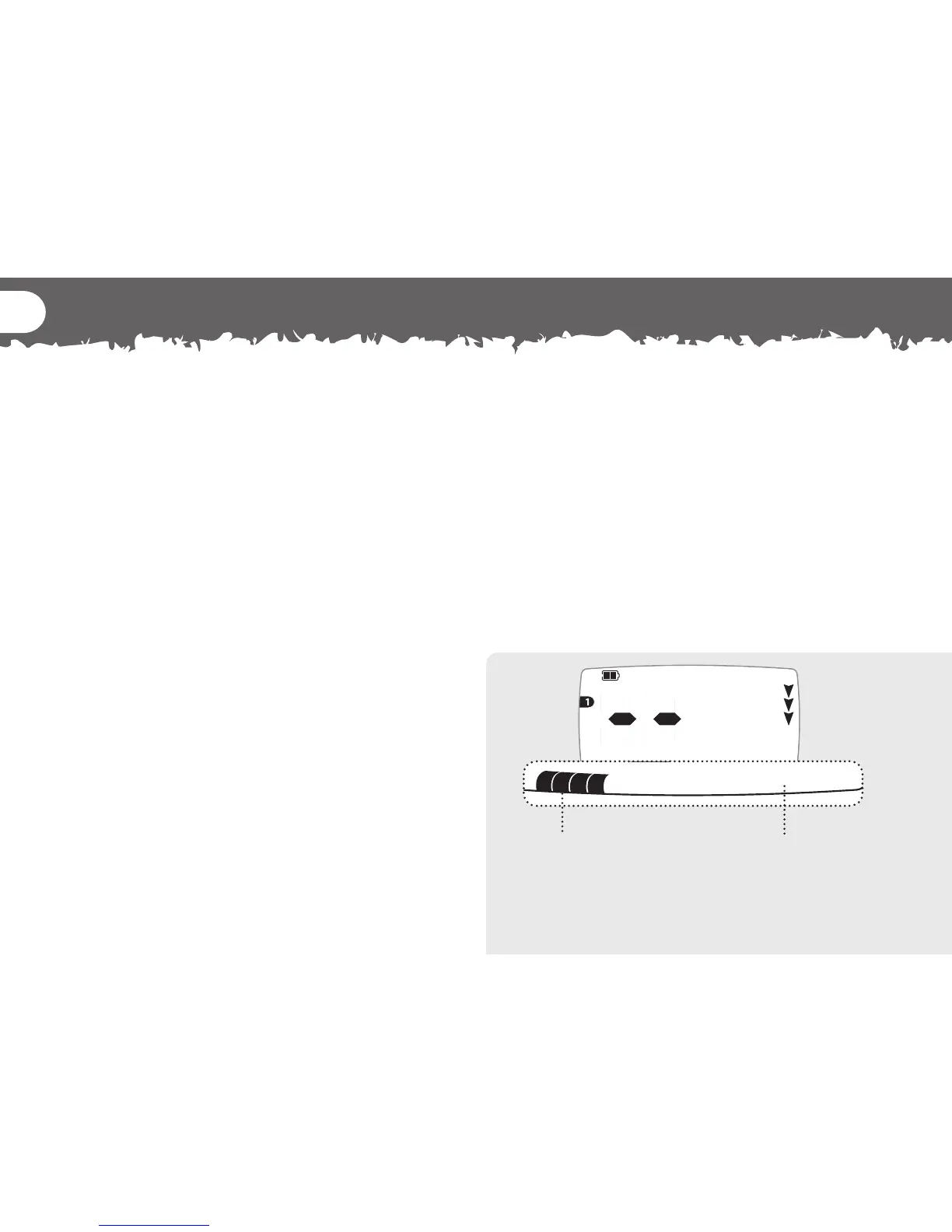